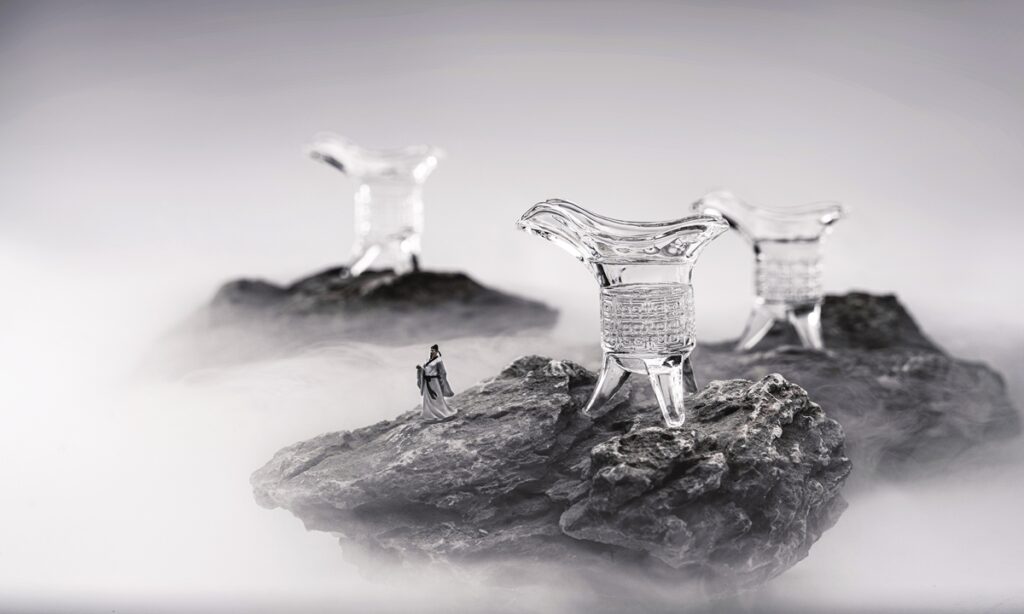Changing ‘ganbei’ culture
Chinese baijiu, or the white spirit, is one of the quintessential elements of Chinese culture and its brewing in China has a long time history dating back to ancient times. In the course of its evolution, different kinds of brewing technology have been created and the unique baijiu culture was created.
The custom of raising a cup of baijiu is rooted in hundreds of years of Chinese culture, and today, baijiu consumption is going through a profound change as young people tend to have their unique habits, Li Hang, a baijiu sommelier in Beijing, told the Global Times.
Baijiu has found its way into the philosophy, etiquette, literature, society, food and many other aspects of culture and is accepted as a special drink for traditional rituals and social occasions, like the Chinese New Year as well as the Mid-Autumn Festival.
As time changes, the baijiu industry is embracing a growing number of young costumers.
According to media reports, baijiu consumption ushered in a peak as of first half of this year.
According to e-commerce platform data, the consumption of baijiu increased by 230 percent year-on-year and the orders of high unit price orders increased during Chinese shopping festivals.
In the Chinese baijiu consumption crowd, the trend of rejuvenation is becoming more and more obvious, and the post-95 group shows the fastest growing orders, gradually becoming the main group of baijiu consumption.
Baijiu becomes ‘younger’
Many traditional baijiu companies are attempting to undergo significant transformation to promote baijiu to a new and younger audience through lower alcohol volume and attractive advertisement.
In 2022, Moutai launched its ice cream.
The ice cream is allegedly made in accordance with the ratio of 50 grams of 53-degree liquor, mixed with every 1 kilogram of milk, and the cumulative sales volume of the product has reached nearly 10 million cups so far.
The ice cream shows the other side of the baijiu innovation, attracting more young consumers.
Apart from Moutai, most of the traditional baijiu companies are promoting innovation, and low-alcohol product competition is getting more and more intense.
The younger generation is the main consumer of low alcohol, liquor producers which also launched low alcohol baijiu and fruit-flavored baijiu to cater to young people’s tastes.
New manner
“Ganbei” is used as “cheers,” and literally translates to “bottoms up” and is used to encourage friends to drink up.
While young people have gradually become the baijiu’s main consumer group in recent years, “the post-95 generation is changing the current drinking culture and the ganbei culture,” Li told the Global Times.
As the president of Sommelier Academy in China, Li insisted to boost the Chinese sommelier standards. Sommelier Academy focuses on the sommelier trainings including baijiu and wine, hosts events such as the China Food and Wine Challenge Championship and provides consulting services to premium hotels.
Chinese drinking culture is complex and one of the most important aspects of Chinese social life, as it has been for centuries.
Drinking could be very ritualistic, especially since ancient times it included several parts: first, making a “worship” gesture to show respect to the host, then pouring out a little liquor on the ground as a “sacrifice” to thank the earth for the virtue of birth and nourishment, then tasting and praising the baijiu to make the host happy and finally raising the cup to drink.
When it comes to drinking in modern times, the “ganbei” culture is especially used in doing business in China.
In ancient times, however, it would have been uncivilized and impolite to get somebody down with liquor this way.
“Nowadays young people enjoy the process of participation and experience,” Li said.
On TV they can often see people decanting their wine, really enjoying the aroma and tasting their drink slowly, appreciating the flavor, in a very elegant manner.
“We should promote the Chinese drinking etiquette and culture in modern times, not ’empty the glass’ culture,” he noted, “baijiu can also be drunk with a sense of ceremony, like drinking wine.”
Typically, baijiu accompanies meals in China, whether you are dining at home or in a restaurant. The brand and aroma of the baijiu will typically depend on which territory you are dining in.
Different brands of baijiu will be selected, based upon the local cuisine.
“As a baijiu sommelier, I introduce the local cultural background to customers, elaborate the reasons for choosing the brand of liquor based on the local cuisine and introduce the story behind the liquor, so that the customers can feel that they are not only drinking baijiu, but also tasting baijiu culture and feeling a sense of participation,” added Li.
Rejuvenation of liquor is one of the important trends for the future development of China’s liquor industry, but more importantly, “I hope we can promote the liquor culture to international friends in an easy-to-understand language to make Chinese liquor shine on the international stage,” Li noted.
(Global Times)




